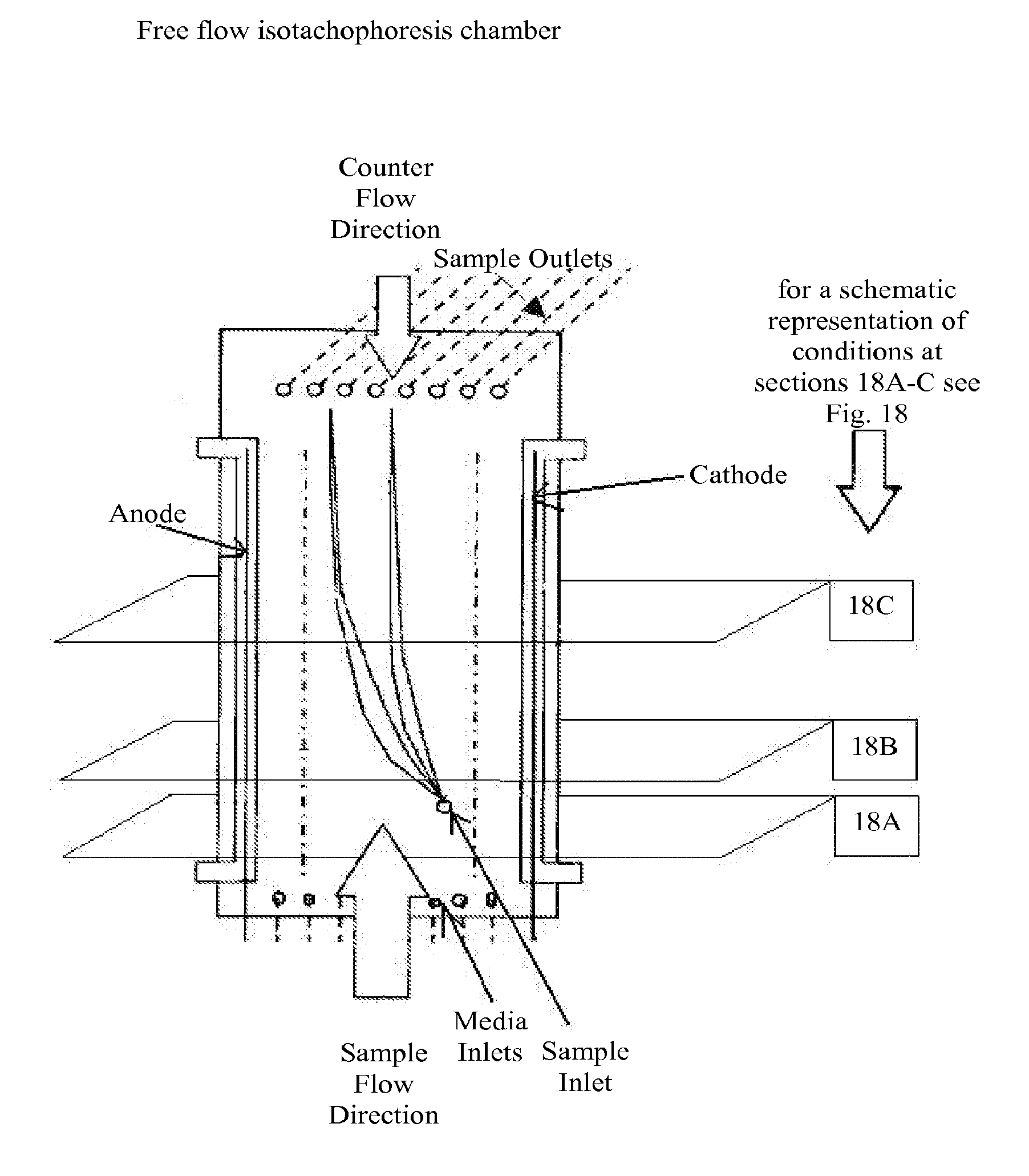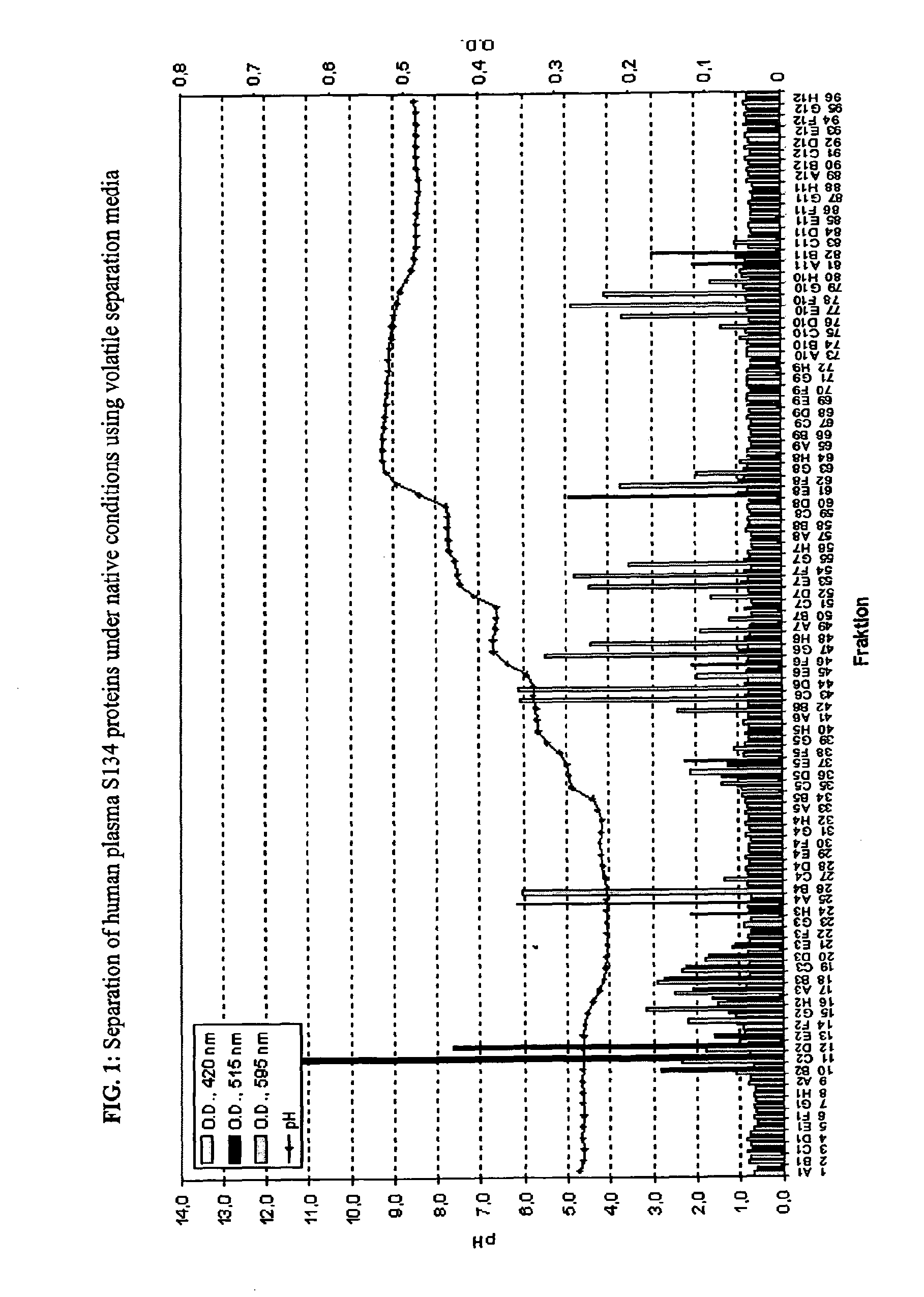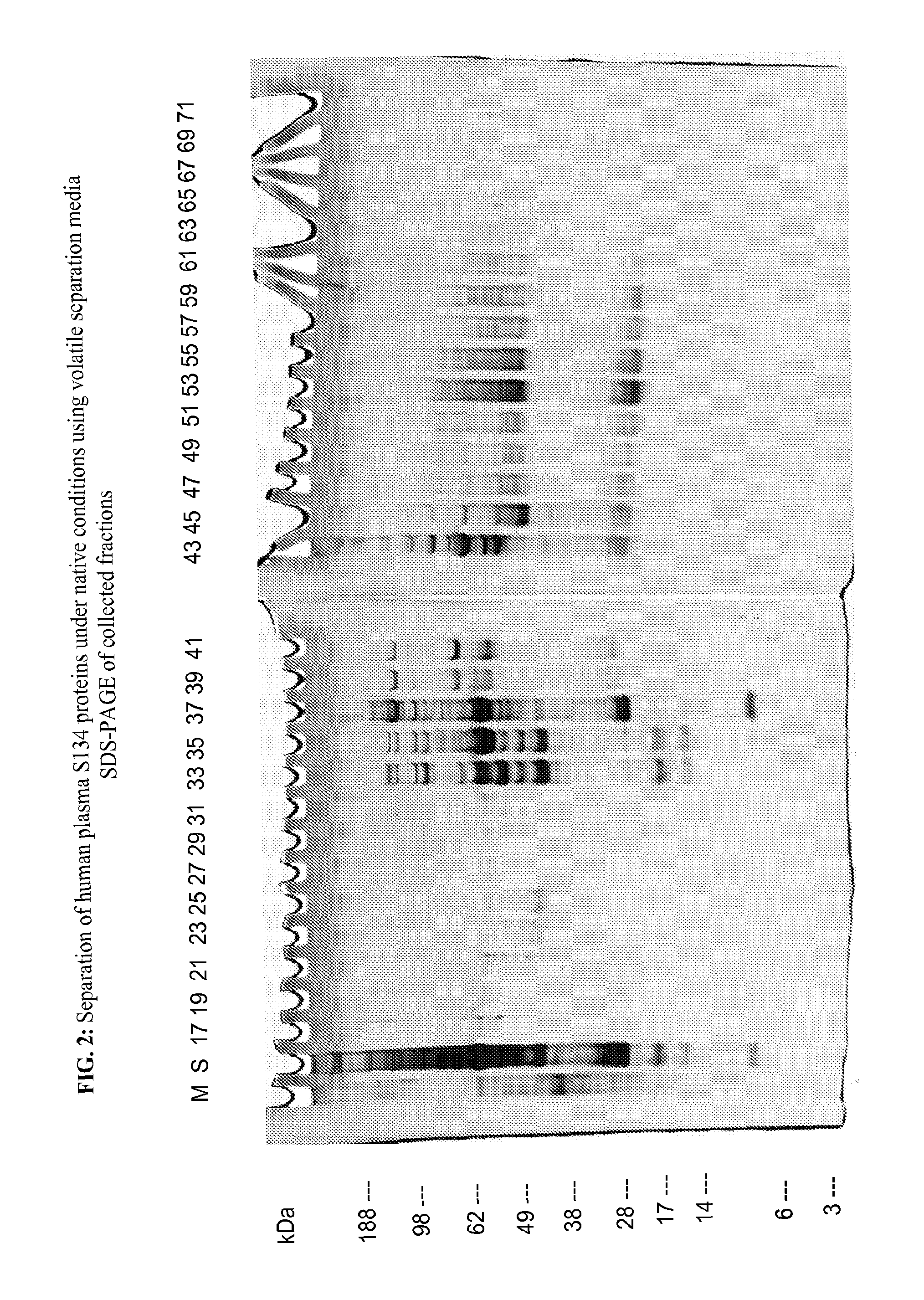FFE Media and FFE Methods Comprising Volatile Separation Media
a separation media and volatile technology, applied in the field of separation media, can solve the problems of ionization techniques used, application does not disclose separation media, and more abundant species have a tendency to “drown” signals
- Summary
- Abstract
- Description
- Claims
- Application Information
AI Technical Summary
Benefits of technology
Problems solved by technology
Method used
Image
Examples
example 1
Protein Separation of Human Plasma Under Native Conditions
[0252]The separation medium and stabilizing media were tested on a BD™ Free Flow Electrophoresis System in FF-IEF mode using a quality control solution. The apparatus was set up comprising nine media inlets (E1-E9) and four sample inlets (S1-S4). Anodic stabilizing medium was introduced into inlet E1. The cathodic stabilizing medium was introduced into inlet E9 and the sample was introduced via sample inlet S2. The total time of electrophoresis was approximately 10 minutes. The voltage applied was 500V and the current was 30 mA. The sample and the media were introduced at a flow rate of 1.5 ml / h and 120 ml / h, respectively.
[0253]Anodic Stabilizing Medium:
[0254]450 mM HAc, 225 mM TRIS (pH=4.5; conductivity: 9080 μS / cm) (E1)
[0255]Cathodic Stabilizing Medium:
[0256]225 mM HAc, 1148 mM TRIS (pH=8.40; conductivity: 7730 μS / cm) (E9)
[0257]Separation Medium:
Media Inlet E2E3E4E5E6E7E8Media150 mM15 mM15 mM15 mM15 mM15 mM100 mMHAcTRISTRIS...
example 2
Native Depletion of Human Serum Albumin from Human Plasma
[0260]The separation medium and stabilizing media were tested on a BD™ Free Flow Electrophoresis System in FF-IEF mode using a quality control solution. The apparatus was set up comprising nine media inlets (E1-E9) and four sample inlets (S1-S4). Anodic stabilizing medium was introduced into inlet E1. The cathodic stabilizing medium was introduced into inlet E9 and the sample was introduced via sample inlet S2. The total time of electrophoresis was approximately 10 minutes. The voltage applied was 500V and the current was 31 mA. The sample and the media were introduced at a flow rate of 1.5 ml / h and 120 ml / h, respectively.
[0261]Anodic Stabilizing Medium:
[0262]450 mM HAc, 225 mM TRIS (pH=4.5; conductivity: 9080 μS / cm) (E1;
[0263]Cathodic Stabilizing Medium:
[0264]225 mM HAc, 1148 mM TRIS (pH=8.40; conductivity: 7730 μS / cm) (E9);
[0265]Separation Medium:
Media InletE2E3E4E5E6E7E8Media150 mM15 mM15 mM15 mM15 mM15 mM100 mMHAcTRISTRIST...
example 3
FFE Separation in Cyclic Interval Mode
[0268]The separation medium and stabilizing media were tested on a BD™ Free Flow Electrophoresis System in FF-IEF mode using a quality control solution. The apparatus was set up comprising nine media inlets (E1-E9) and four sample inlets (S1-S4). Anodic stabilizing medium was introduced into inlet E1. The cathodic stabilizing medium was introduced into inlet E9 and the sample was introduced via sample inlet S2. The total time of electrophoresis was approximately 40 minutes. The voltage applied was 500V and the current was 30 mA. The sample and the media were introduced at a flow rate of 1.5 ml / h and 150 ml / h, respectively. The run was performed in cyclic interval FF-IEF mode at 50 ml / h and the fractionated sample was eluted at 150 ml / h.
[0269]Anodic Stabilizing Medium:
[0270]450 mM HAc, 225 mM TRIS (pH=4.54; conductivity: 9120 μS / cm) (E1);
[0271]Cathodic Stabilizing Medium:
[0272]225 mM HAc, 1148 mM TRIS (pH=8.40; conductivity: 8040 μS / cm) (E9);
[027...
PUM
| Property | Measurement | Unit |
|---|---|---|
| temperature | aaaaa | aaaaa |
| temperature | aaaaa | aaaaa |
| pKa | aaaaa | aaaaa |
Abstract
Description
Claims
Application Information
 Login to View More
Login to View More - R&D
- Intellectual Property
- Life Sciences
- Materials
- Tech Scout
- Unparalleled Data Quality
- Higher Quality Content
- 60% Fewer Hallucinations
Browse by: Latest US Patents, China's latest patents, Technical Efficacy Thesaurus, Application Domain, Technology Topic, Popular Technical Reports.
© 2025 PatSnap. All rights reserved.Legal|Privacy policy|Modern Slavery Act Transparency Statement|Sitemap|About US| Contact US: help@patsnap.com



